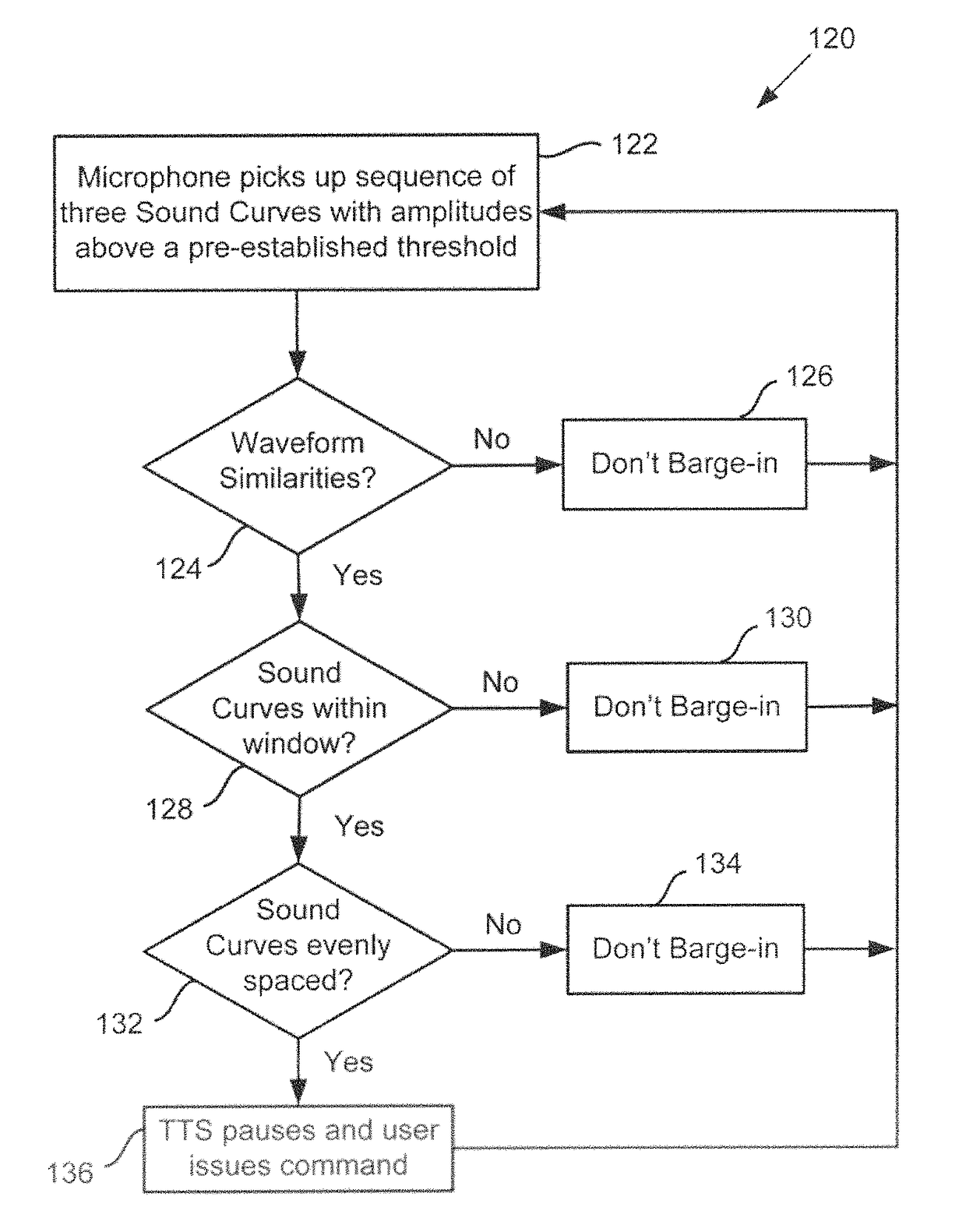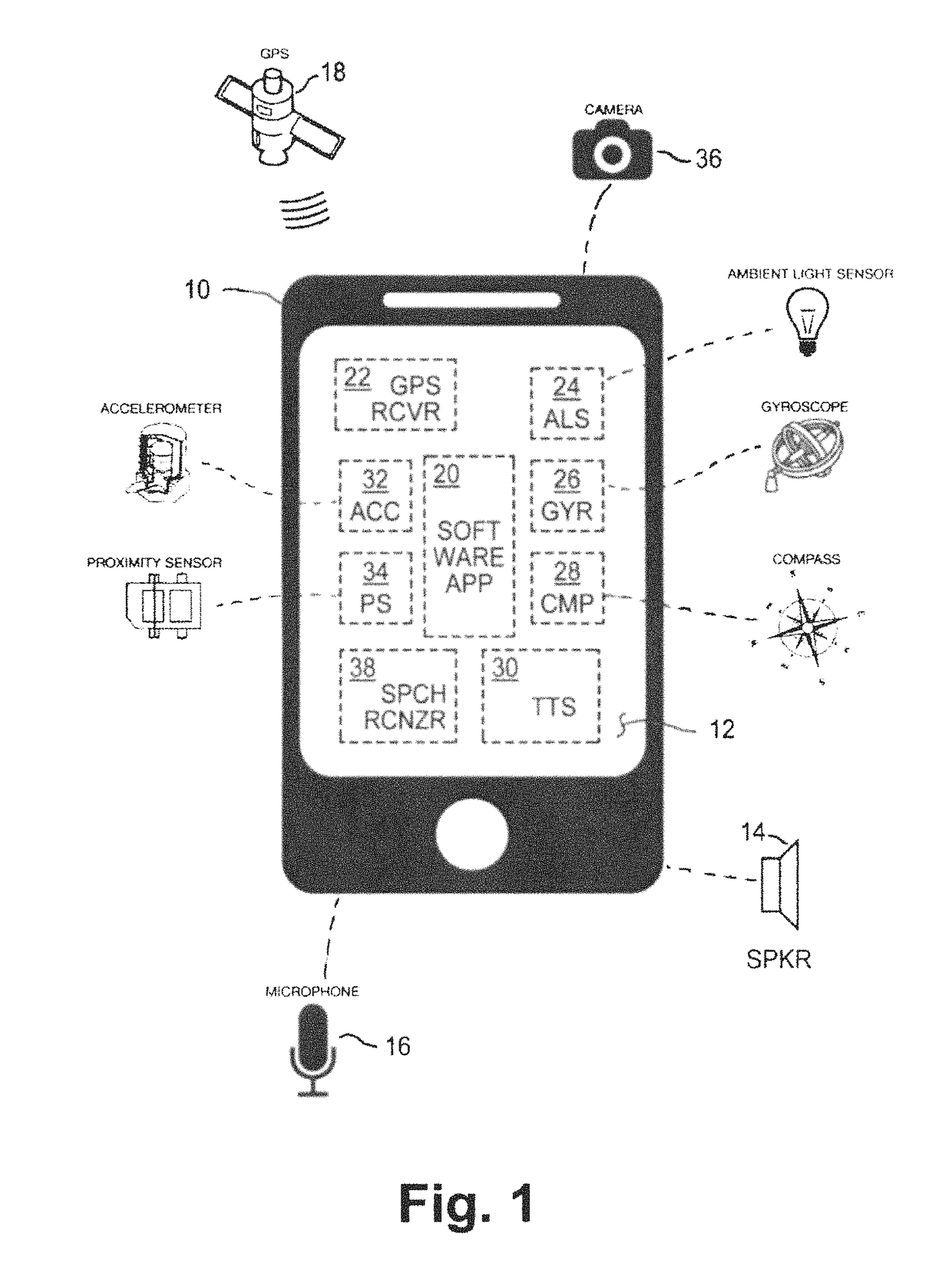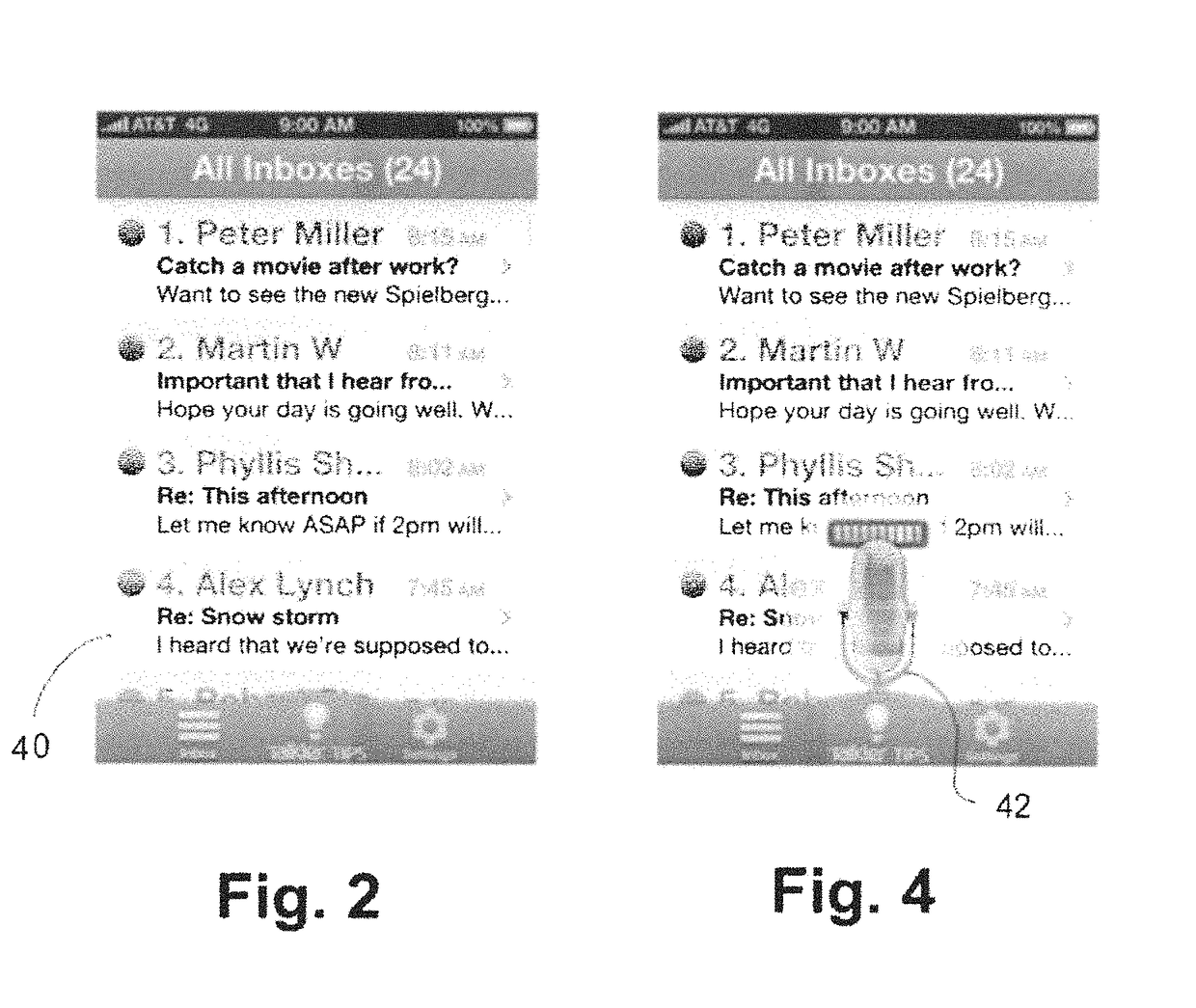System and method for dynamically interacting with a mobile communication device by series of similar sequential barge in signals to interrupt audio playback
a mobile communication device and sequential barge technology, applied in the field of dynamic interaction with mobile communication devices, can solve the problems of unsafe, convenient and even appropriate use of devices, state of the art does not provide a method for users, and the user experience is less than ideal, so as to facilitate interaction with the mobile communication device
- Summary
- Abstract
- Description
- Claims
- Application Information
AI Technical Summary
Benefits of technology
Problems solved by technology
Method used
Image
Examples
Embodiment Construction
[0027]There is shown in FIG. 1 a mobile communication device 10, such as an IPHONE, a SMARTPHONE, an ANDROID, or a BLACKBERRY. The mobile communication device 10 may also include a cradle (not shown) or other physical mounting unit that supports the mobile communication device 10 in view of the user. This configuration allows the user to operate the mobile communication device 10 in an essentially hands-off and eyes-free mode.
[0028]The mobile communication device 10 may include a Software Application 20, in accordance with an exemplary embodiment of the present invention. The Software Application 20 functions in conjunction with a speech recognizer 38 to enable the user to listen to and interact with the mobile communication device 10, as described in greater detail below. In an exemplary embodiment, the user may interact with the mobile communication device 10 by selectively glancing at a display screen 12, listening to a speaker 14 in the mobile communication device 10, and provid...
PUM
 Login to View More
Login to View More Abstract
Description
Claims
Application Information
 Login to View More
Login to View More - R&D
- Intellectual Property
- Life Sciences
- Materials
- Tech Scout
- Unparalleled Data Quality
- Higher Quality Content
- 60% Fewer Hallucinations
Browse by: Latest US Patents, China's latest patents, Technical Efficacy Thesaurus, Application Domain, Technology Topic, Popular Technical Reports.
© 2025 PatSnap. All rights reserved.Legal|Privacy policy|Modern Slavery Act Transparency Statement|Sitemap|About US| Contact US: help@patsnap.com



